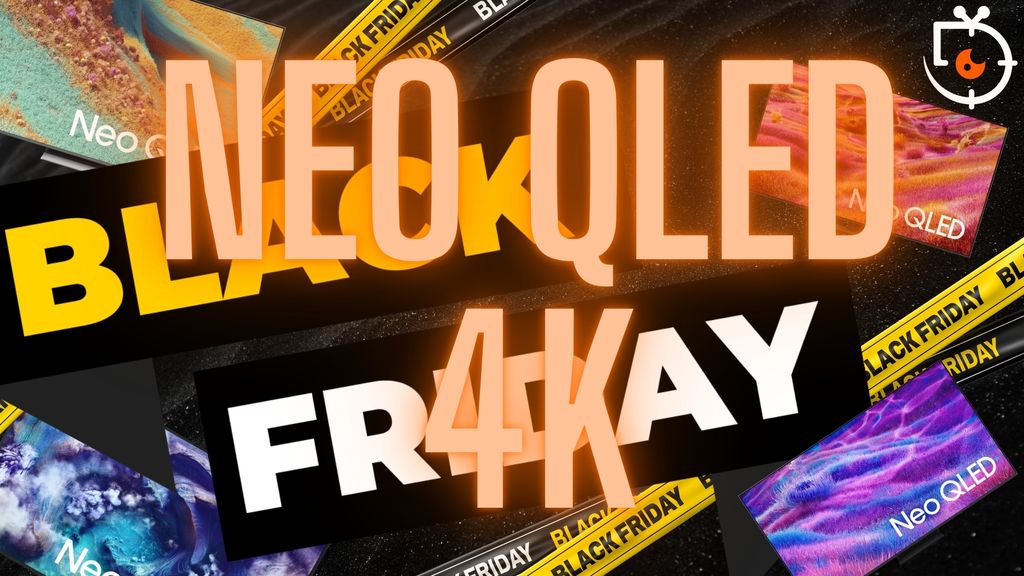- Matching (Score)
- Our verdict
- Competing TVs
- TV appearance
- Where to buy
- Contrast and black detail
- HDR effect quality
- Factory color reproduction
- Color reproduction after calibration
- Smoothness of tonal transitions
- Image scaling and smoothness of tonal transitions
- Blur and motion smoothness
- Console compatibility and gaming features
- Input lag
- Compatibility with PC
- Viewing angles
- Daytime performance
- TV features
- Apps
- Playing files from USB
- Sound
- Panel details
SAMSUNG QN80F Review
Available screen sizes:
Diagonal with a different matrix:

Complete the survey to find out the result
Panel type: LCD VA Refresh rate: 144Hz Brand: SAMSUNG Resolution: 3840x2160 System: Tizen Model year: 2025
The Q80 series has been considered a strong mid-range option in Samsung's lineup for years, but in 2025 it undergoes a significant transformation. The QN80F is the first representative of this line that has received the NeoQLED nickname – which automatically raises the question: is this a real qualitative leap or just a cosmetic facelift? Does the "Mini LED" backlighting really improve contrast compared to its predecessors? And can the QN80F confidently compete with the best TVs in its class?
We checked this for you in a full test!

SAMSUNG QN80F - Our verdict
7.3
Overall rating
QN80F is the first in the history of Samsung's "eighty" series to feature Mini LED backlighting. And it does this really well. Although the number of dimming zones is not overwhelming, the black level is solid, and combined with high brightness, it allows for a very decent picture in HDR content. Additionally, there's a 144 Hz panel that provides excellent motion smoothness, and the set of features for gamers – VRR, ALLM, Game Motion Plus – makes the QN80F a model practically designed for those playing on console or PC. The television operates quickly and responsively, and the Tizen system runs like lightning – whether you're searching for apps or switching sources. Is there anything to criticize? Of course, as always – there are shortcomings in the system (like recording to USB), there’s no DTS support, and Mini LED is not without its limitations. But the QN80F is a great everyday television – versatile, well-thought-out, and... with significant price potential. Looking at the history of this series, we can expect this "eighty" to shake things up once it hits the first reasonable promotions. And it could be virtually unbeatable at its price – especially if Samsung improves the minor teething issues.
Advantages
Nice black and contrast - VA matrix combined with MINI-LED backlighting.
Great brightness - up to 1000 nits in HDR
Fast and responsive matrix - 144 Hz
Rich support for gamers - 4xHDMI 2.1, VRR, ALLM, GameBar, Game Motion Plus
Very good usability in daylight
Advanced Tizen operating system
Simple operation
PiP function
Disadvantages
No support for DTS format – limitation when connecting home theater
No USB recording function
Relatively small number of dimming zones
Issues with HGiG function (for gamers) – update removed this option*
Movies and series in UHD quality
6.9
Classic TV, YouTube
6.8
Sports broadcasts (TV and apps)
6.7
Gaming on console
8.5
TV as a computer monitor
8.8
Watching in bright light
6.6
Utility functions
7.7
Apps
8.7
Sound quality
6.7
Complete the survey to find out what fits your preferences
SAMSUNG QN80F - Competing TVs in this price range
SAMSUNG QN80F - TV appearance
HDMI inputs: 0 x HDMI 2.0, 4 x HDMI 2.1 (48Gbps) Outputs: Toslink (Optical audio), eARC (HDMI), ARC (HDMI) Network Interfaces: Wi-Fi 2.4GHz, Wi-Fi 5GHz, Ethernet (LAN) 100Mbps
Build quality: Good
Stand type: Central
Bezel color: Graphite
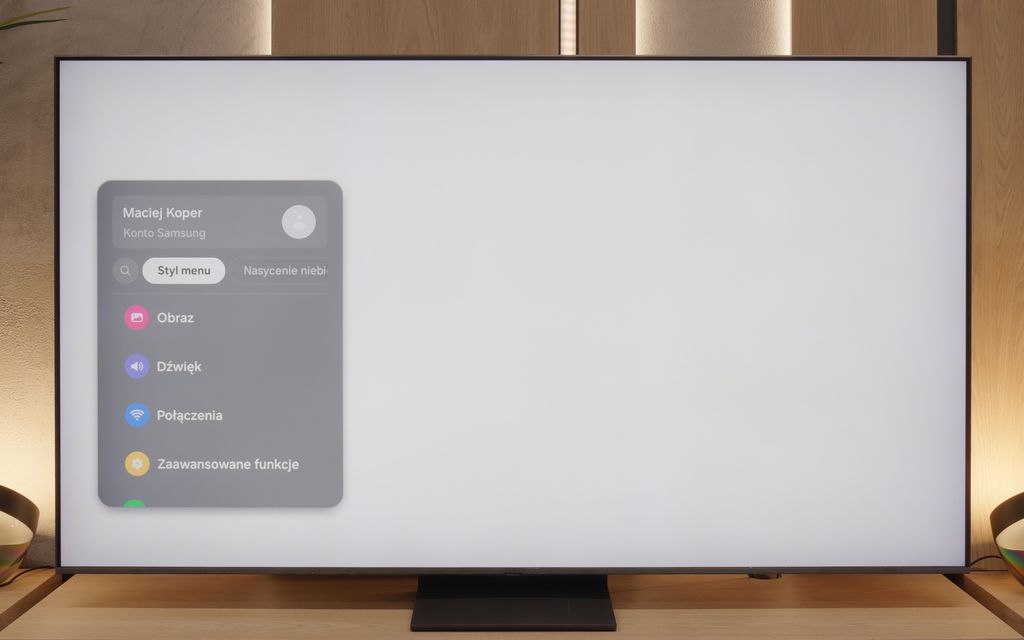
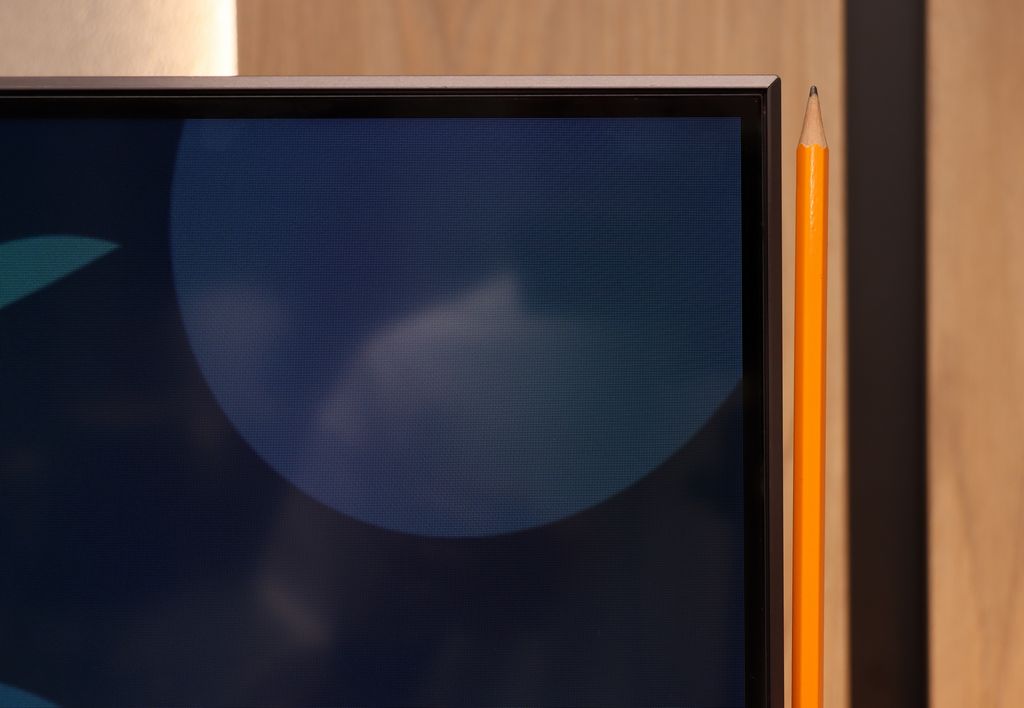
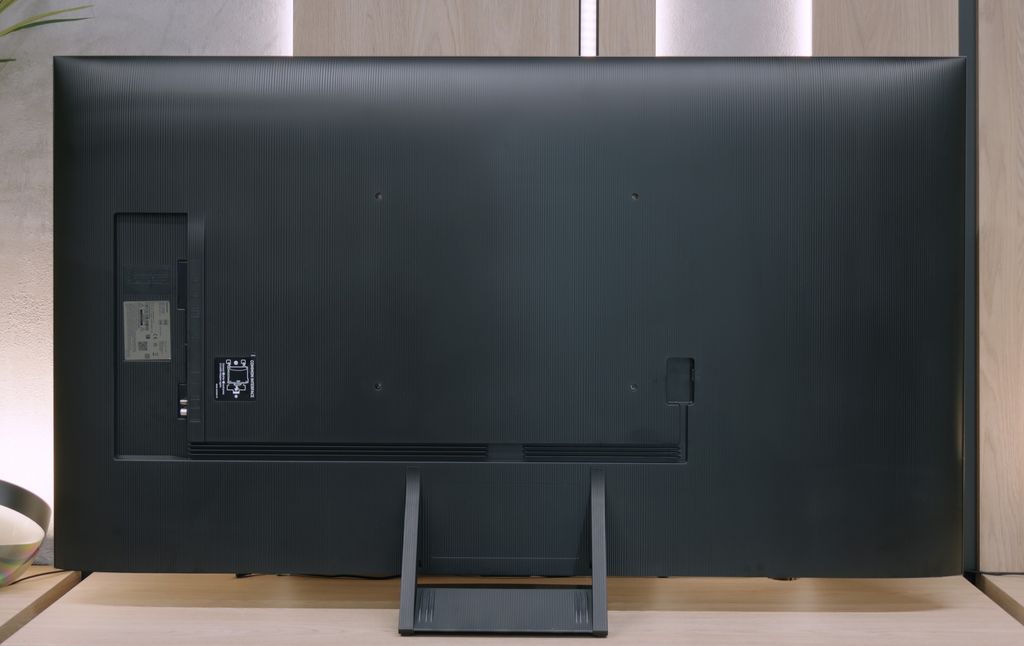

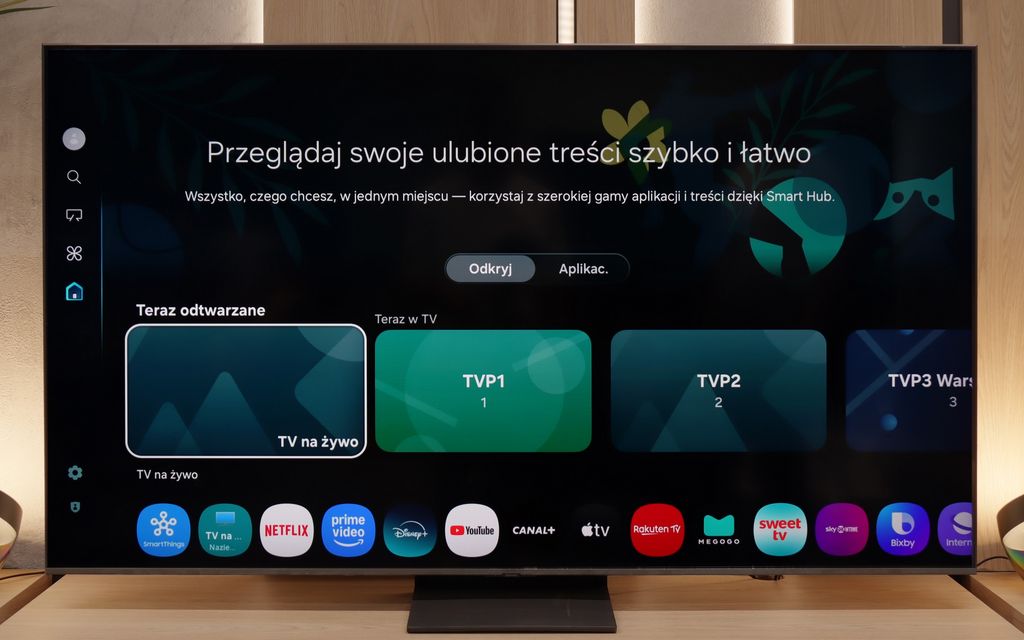

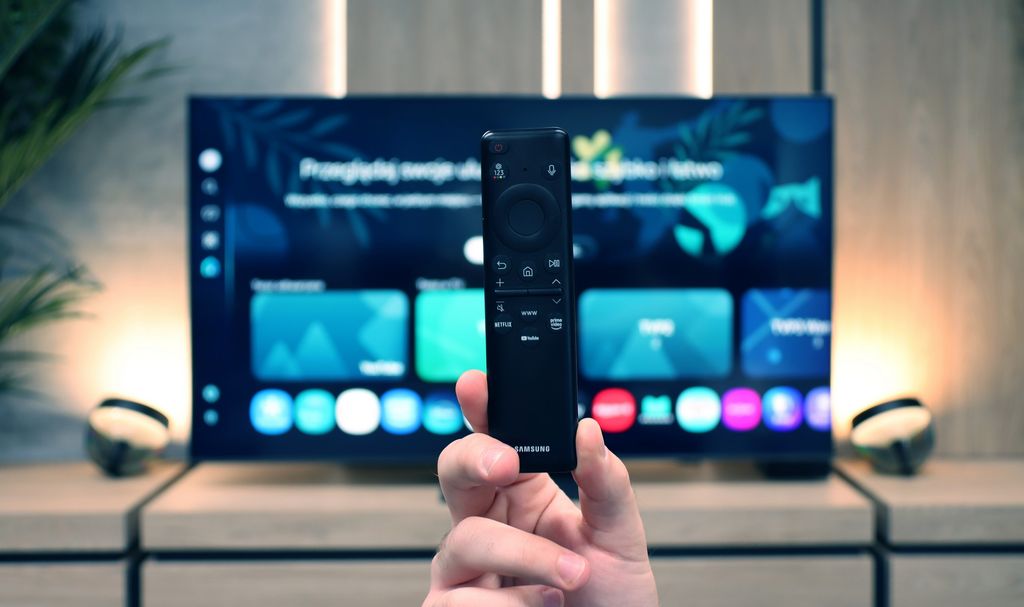
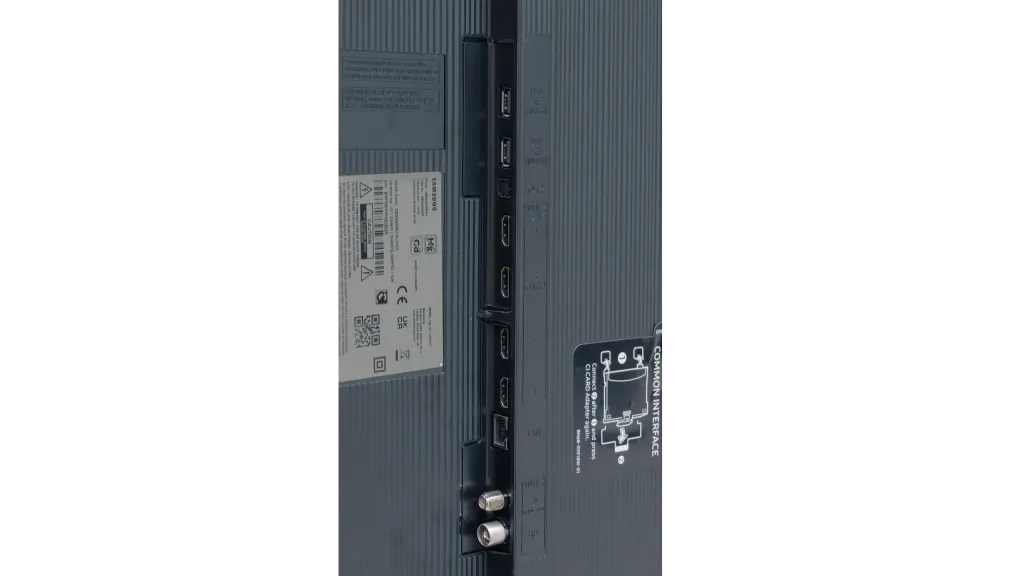
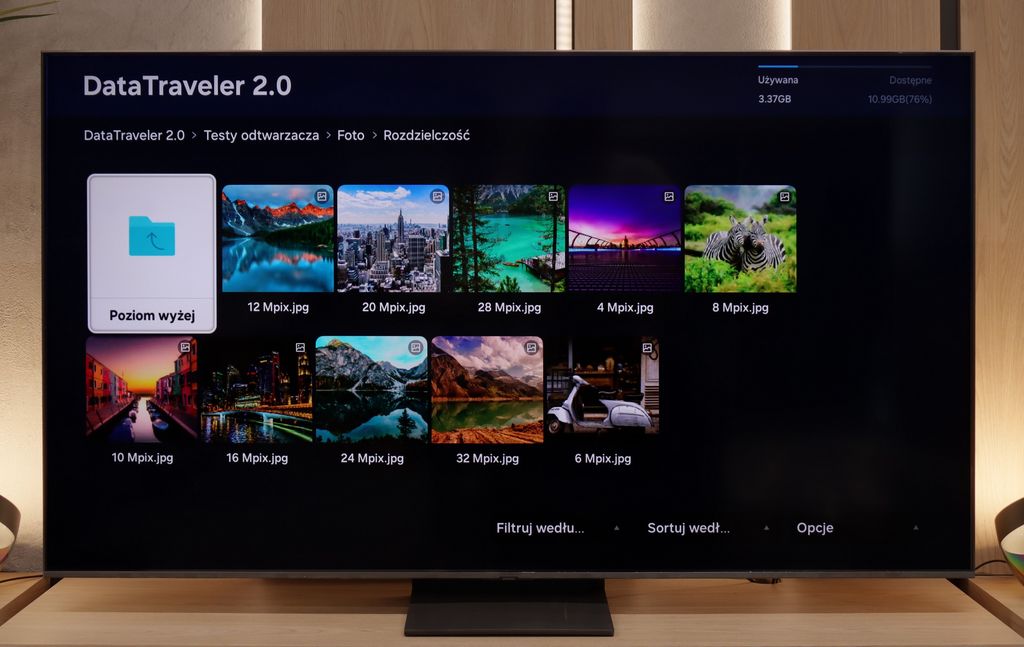
Stand: Fixed
Flat design: Yes
Accessories: Stand
The Samsung QN80F is a TV that makes a very good impression at first glance. The slim aluminum frame – or its quite successful imitation – gives the device an elegant and modern character. Although the TV itself is not as ultra-slim as its cheaper cousin, the QN70F, its flat design allows it to be mounted completely flush with the wall, which many users will surely appreciate. However, if we do not plan to hang the QN80F, the manufacturer adds legs to the set – (or rather a central base?) After putting on the cover, they create one neat central leg. Overall, it looks tidy, although plastic dominates the back. It is not at a premium level, but nonetheless, the TV looks fresh and contemporary – especially from the front, where the screen is surrounded by a thin bezel and nothing distracts attention.
Buy at the best price
Select size:
SAMSUNG QN80F - Contrast and black detail
6.8/10
Local dimming function: Yes, number of zones: 88 (8 x 11)

Result
34,100:1

Result
8,200:1

Result
32,500:1

Result
4,550:1

Result
3,800:1
Visibility of details in the lights:

QN80F is a representative of the Neo QLED series, which means it's a television with Mini LED backlighting. Unlike its cheaper cousin, the QN70F model, here the diodes are placed directly behind the panel (rather than at the edges), which gives a solid advantage in contrast control right from the start. In the 65-inch variant we tested, we counted 88 local dimming zones – a result that may not be particularly impressive, but as it turned out, sufficient to achieve quite decent results.
In tests based on scenes from movies like Oblivion and The Meg, the QN80F performed well – blacks were deep, and the overall image consistency was eye-catching. However, in more demanding moments (e.g., scenes with a lot of bright details on a dark background), a halo effect appeared. This is where the limitation of the number of zones shows – bright elements could bleed into each other, and some details in dark areas lost sharpness and contrast. In one of the helicopter scenes (The Meg), we even noticed a slight flicker in brightness, as if the television was trying its best to maintain visibility of details at the expense of black depth.
However, these are not problems exclusive to this model – the halo effect or contrast drops in very complex scenes are something most Mini LED televisions struggle with, even the more expensive ones. In its class, the QN80F still performs positively and offers clearly better contrast than the QN70F model with edge lighting. For most users, this will be a level more than sufficient – though not ideal.
Halo effect and black detail visibility:
SAMSUNG QN80F - HDR effect quality
5.8/10
Supported formats: HDR10, HDR10+, HLG Color gamut coverage: DCI P3: 93.1%, Bt.2020: 72.3%
Luminance measurements in HDR:

Result
799 nit

Result
533 nit

Result
717 nit

Result
245 nit

Result
656 nit
QN80F is quite a bright screen – in synthetic tests, it achieved nearly 1000 nits, which allows for reasonable expectations with HDR content. And indeed, in many scenes, the television truly shines. Sequences with a lot of light – such as shots from the movie Life of Pi or wide, bright surfaces in The Meg – look spectacular. Brightness maintains around 700 nits, which provides a solid effect, sufficient to feel the true "HDR magic." Unfortunately, not every scene looks that good. In materials with small, bright details on a dark background, like in Sicario 2, the television has problems – it can dim certain elements significantly, sometimes to the point where they disappear from the image. This is the result of a limited number of dimming zones, which forces the device to make compromises: either stick to inky blacks or sacrifice some details. QN80F usually chooses the former. As a consolation, it has quite decent coverage of a wide color gamut – DCI-P3 at 93%. This is not the highest score on the market, but it is more than enough for most content on streaming platforms.
Scene from the movie “Pan” (about 2800 nits)

Scene from the movie “Billy Lynn” (about 1100 nits)

We also conducted all tests on real movies in the highest possible picture quality. And it must be said outright – the QN80F performed really well. Despite some color deviations and slightly lower color saturation compared to reference screens, the television quite well reproduced even the most difficult scenes, such as dynamic shots from movies like Pan or Billy Lynn. There were moments when small elements might have been a bit too muted or – conversely – slightly overexposed compared to the reference. But it's hard to expect perfection from equipment that is meant to compete in the mid-range class, rather than with mastering monitors. In this segment, the QN80F shows itself to be very solid and should not disappoint you in daily movie viewing.
HDR luminance chart:
HDR luminance
The Samsung QN80F supports two HDR formats: the base HDR10 and dynamic HDR10+. And while one might frown at the lack of Dolby Vision – as it is the most recognizable standard today – there's no need to panic. More and more platforms and films support HDR10+, so we’re not condemned to watch everything in a "static" version. Dynamic metadata really makes a difference – the TV adjusts brightness and contrast for each scene, making challenging moments (e.g., a character in shadow against a bright sky) simply look more sensible. The test scene with horses is a great example – previously nearly washed out, it now has depth and detail. Sure, Dolby Vision still has an advantage in availability, but with the rapid development of HDR10+, it's hard to talk about a significant shortcoming. The final effect is very similar, and on the QN80F, it just looks good.
Static HDR10

Dynamic: HDR10+

Factory color reproduction
6/10
We always test televisions in the best available factory mode – for the Samsung QN80F, this is the Filmmaker mode, and indeed, it offers the settings closest to the creators' intentions. However, this doesn't mean that everything looks perfect. In SDR content, the biggest issue turned out to be an unbalanced white balance – slight deficiencies in green and a noticeable excess of red led to noticeable color errors, and one could almost say there was a pinkish tint to the screen. This was clearly visible in the color checker test, where colors would "escape" their target fields – to the extent that a sensitive viewer's eye could catch it even without the help of a meter.
In HDR content, the white balance was much better, but another problem emerged – brightness management. The EOTF curve caused an overly bright image most of the time, which could affect the perception of contrast and made the screen slightly "flicker" during dynamic light changes. We have already discussed this in the paragraphs about black and HDR. Fortunately, Samsung leaves the user with plenty of options. The QN80F offers a rich set of calibration options, including a 20-point white balance – that's why we decided to check what this television is really capable of after proper calibration.
Color reproduction after calibration
8.3/10
After conducting a thorough calibration, it was possible to bring most image parameters to a really good level. The white balance in both SDR and HDR appears nearly perfect – the image is natural, neutral, and free of the previously noticeable reddening. The colors have gained depth, and the overall visual reception has become more pleasant and cohesive. It was also possible to partially master brightness management, which in the factory version could be problematic. The EOTF chart shows that the television performs significantly better with brightness after calibration – there's no longer excessive dimming of certain elements. In films, it can still be observed that the QN80F has a tendency to slightly brighten the smallest, bright details – this is already a result of the device's construction and the limited number of dimming zones. In short: not everything can be overcome, but what could be improved has been addressed. After calibration, the QN80F makes a really good impression; it simply looks more mature and professional.


SAMSUNG QN80F - Smoothness of tonal transitions
9/10
In this regard, the QN80F really delivers. The transitions between colors are smooth, nothing is choppy, and there are no annoying bands in the sky or strange blotches in the shadows. Movie scenes in darker tones performed particularly well – and that's where most televisions start to struggle. If one really looks for it, slight banding can be seen in the brightest areas, but that's really just nitpicking. In everyday viewing, no one should have a problem with this. To put it simply: the tonal transitions are so good that you can forget about them – and just enjoy the movie.


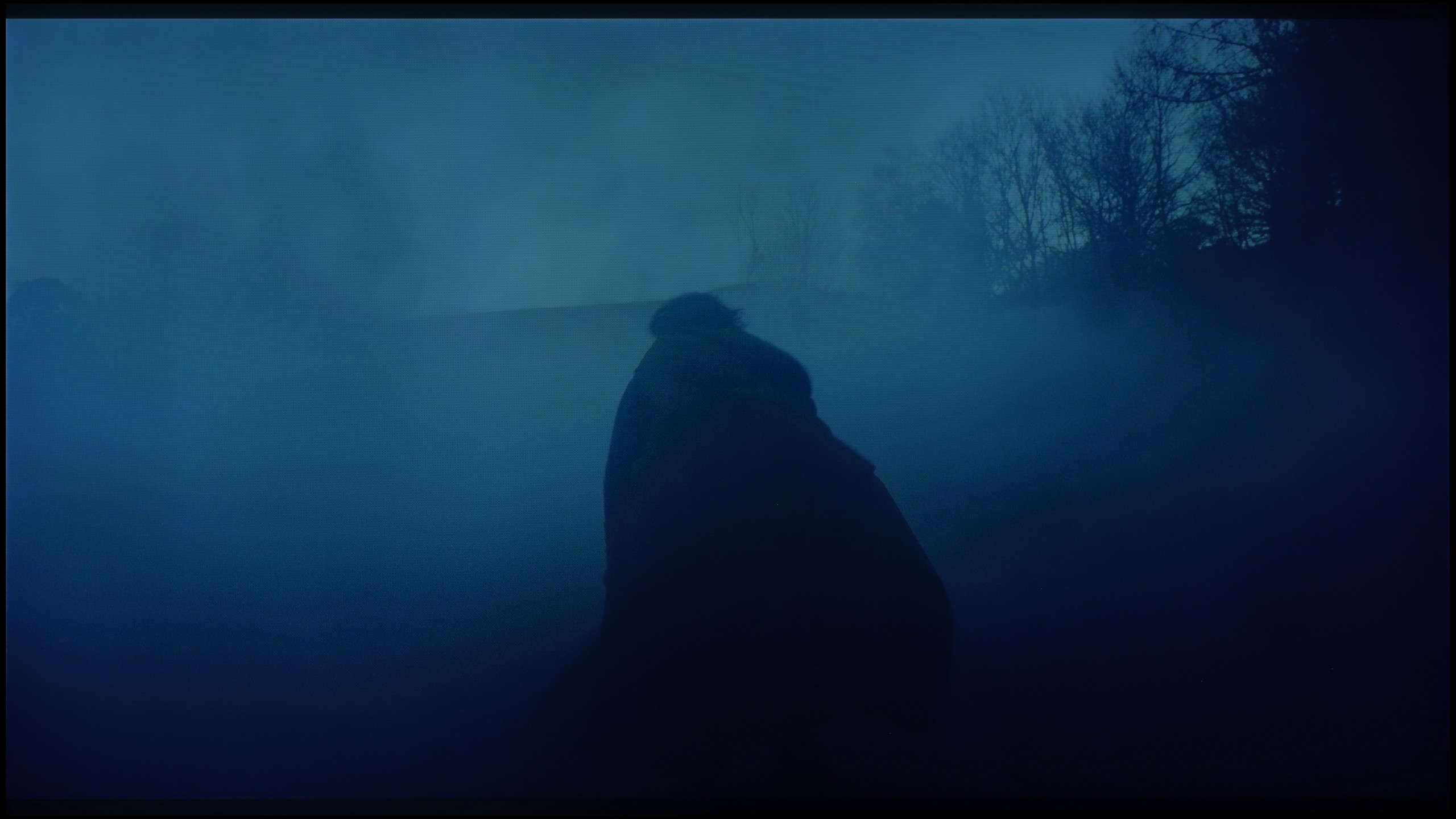
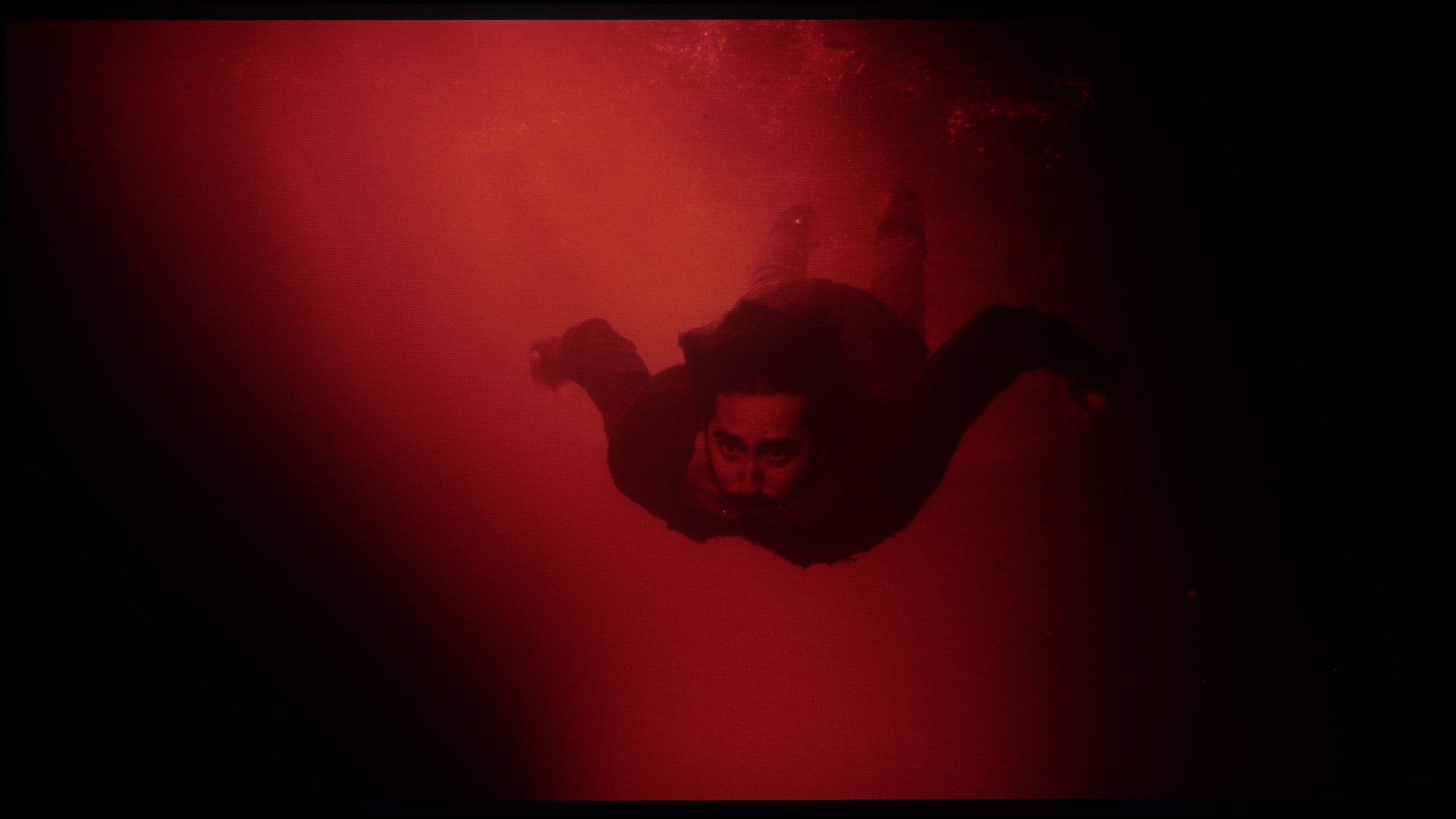




Image scaling and smoothness of tonal transitions
7/10
Smooth transition function

Image without overscan on the SD signal

If, while watching lower-quality materials – for example from YouTube – we notice strange color transitions or unwanted artifacts, it’s worth checking the settings and enabling the noise reduction function. In our opinion, the best setting is at the "medium" level – it effectively smooths out problematic color transitions while not excessively blurring the entire image. However, one must know this: this option tends to remove film grain. If someone cares about preserving this effect (e.g., in older films), it’s better to just turn it off – regardless of the level, the grain always disappears.
When it comes to scaling resolution (i.e., the so-called upscaling), Samsung – as always – performs very well in this area. The QN80F may not compare to the top models worth several thousand, but for its price class, it really performs impressively. Very low-quality materials (e.g., from SD television or older video files) are noticeably improved and look surprisingly decent. The only noticeable drawback is the typical Samsung issue with overscan – that is, slightly cropping the edges of the image at very low resolutions, e.g., 576p.
SAMSUNG QN80F - Blur and motion smoothness
7.5/10
Maximum refresh rate of the panel: 144Hz
Film motion smoothing option: Yes
Blur reduction option: Yes
BFI function 60Hz: Yes, 60Hz (image flickers)
BFI function 120Hz: No
Brightness drop with BFI: 69%
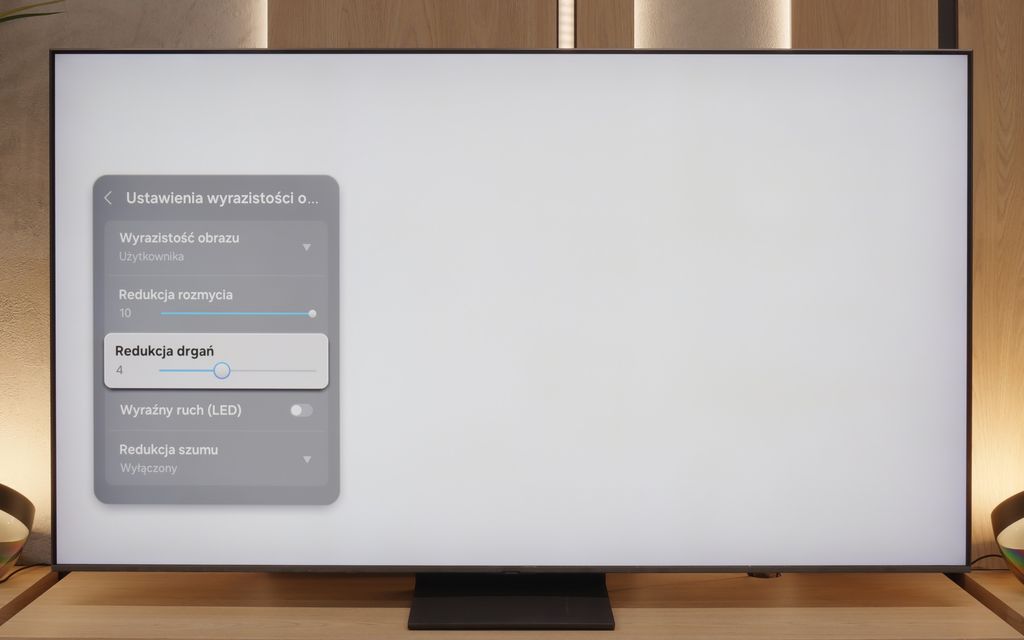
QN80F is truly a "fast" television. The applied panel offers a refresh rate of up to 144 Hz, which in practice means that the screen keeps up with the action – whether we're watching a movie, playing games, or browsing dynamic content on the internet. The image doesn't tear, it doesn't excessively blur, and everything simply looks smooth and pleasant to the eye. Of course, the manufacturer hasn't forgotten about movie fans – in the settings, we find an option for motion smoothness adjustment, allowing us to tailor the effect to our personal preferences. You can leave a more "cinematic" look (for those who enjoy a classic film vibe) or crank up the smoothness to a higher level for a theatrical smoothing effect. Importantly, the choice is ours. Watching movies and playing on the QN80F is simply a joy.
Blur (native resolution, maximum refresh rate):

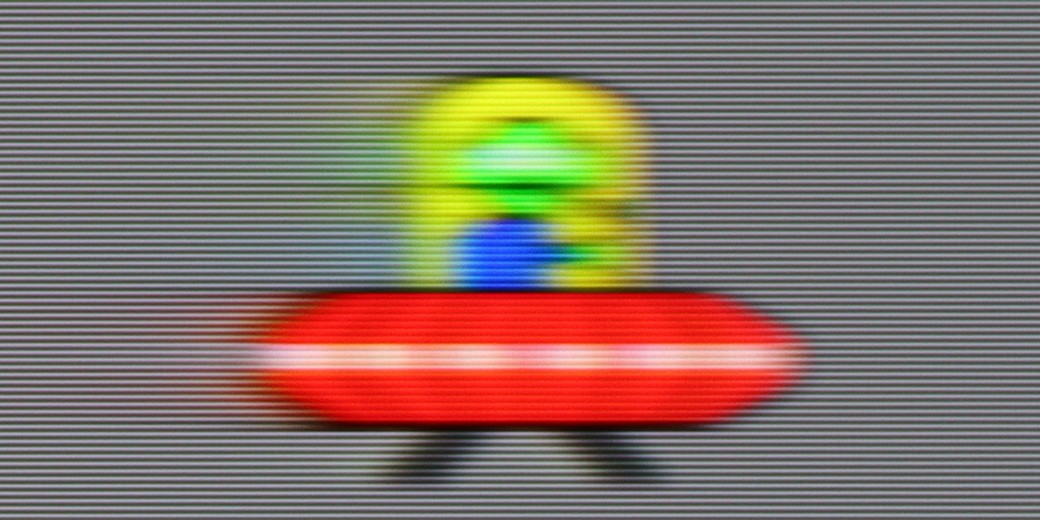

Blur (BFI function enabled):
Image flickers in this mode



When it comes to motion blur, the QN80F performs quite decently. In everyday use, there isn’t any overly large trail following objects, even in faster scenes – like our test classic with the little green man. Of course, if we look at really challenging segments (dark background + bright, fast-moving element), the typical limitations of the VA panel become noticeable. But it’s fair to add that the QN80F doesn’t perform worse here than other LCD TVs in this class. If someone is particularly bothered by motion blur, Samsung provides the "Clear Motion LED" feature – which is classic BFI (black frame insertion). And although it theoretically improves motion clarity, in practice, the picture flickers a lot, and the edges become double. Very few people are likely to use this, but it’s worth knowing that such an option exists – more as a curiosity than a real improvement.
SAMSUNG QN80F - Console compatibility and gaming features
8.2/10
ALLM: Yes
VRR: Yes
VRR range: 48 - 144Hz
Dolby Vision Game Mode: No
Correct implementation of HGIG: No
1080p@120Hz: Yes
1440p@120Hz: Yes
4K@120Hz: Yes
Game bar: Yes
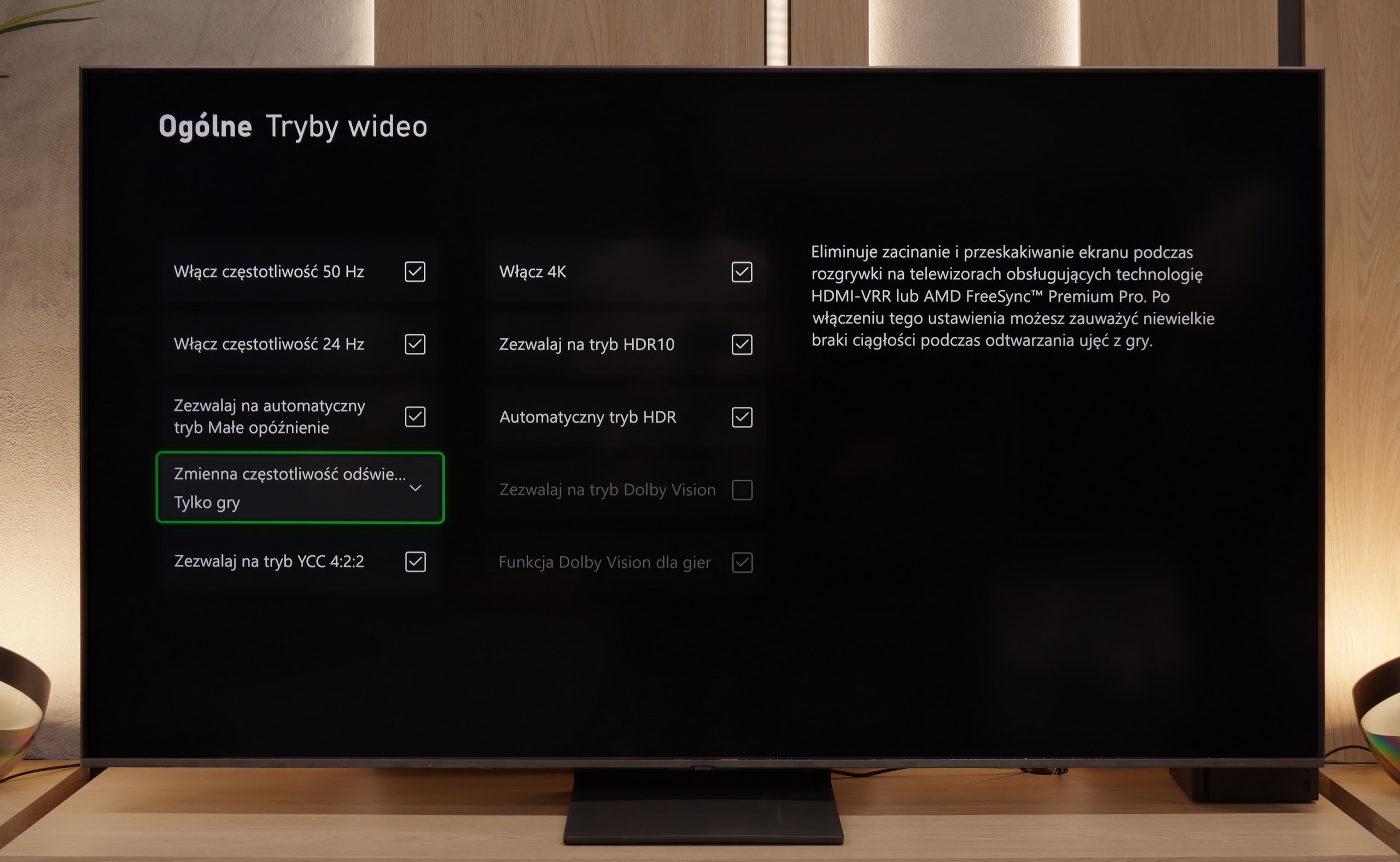

The Samsung QN80F is a TV that delivers on almost every front when it comes to gaming. We have a 144 Hz panel, four fully-fledged HDMI 2.1 ports, support for gamers in the form of variable refresh rate (VRR), automatic low latency mode (ALLM), and even one of the best-designed game bars on the market. The cherry on top is the motion smoother, which – uniquely in the world – works in games without significantly increasing input lag. Sounds like almost the perfect TV for gamers? And indeed, it is almost that.
As usual, Samsung does not support Dolby Vision in games, but that no longer surprises anyone. However, what is much more surprising is that... the HGIG feature has disappeared – that is, the system that allows the console (e.g., PlayStation 5 or Xbox Series X) to precisely match HDR tone mapping to the TV's capabilities. In the latest firmware update for the 2025 models, this option has simply vanished. It looks more like a bug than a deliberate move, but it must be honestly pointed out that as of the day of writing this review, the HGIG feature is simply not available.
And it is precisely because of this one deficiency that the QN80F goes from being almost the perfect gaming TV to a "nearly" perfect device. It's a shame – because everything else indicated that Samsung could set the bar very high once again in this generation.
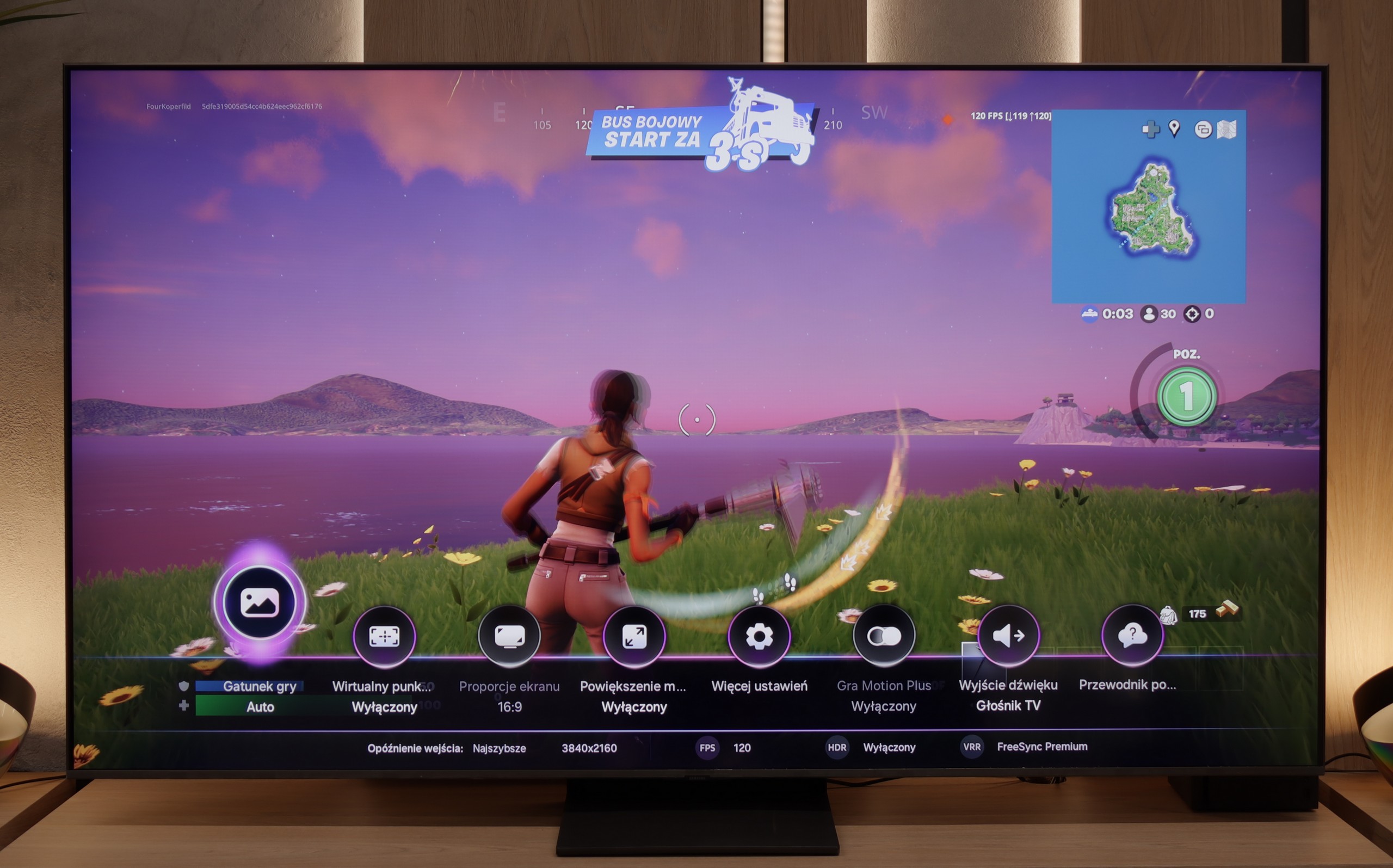
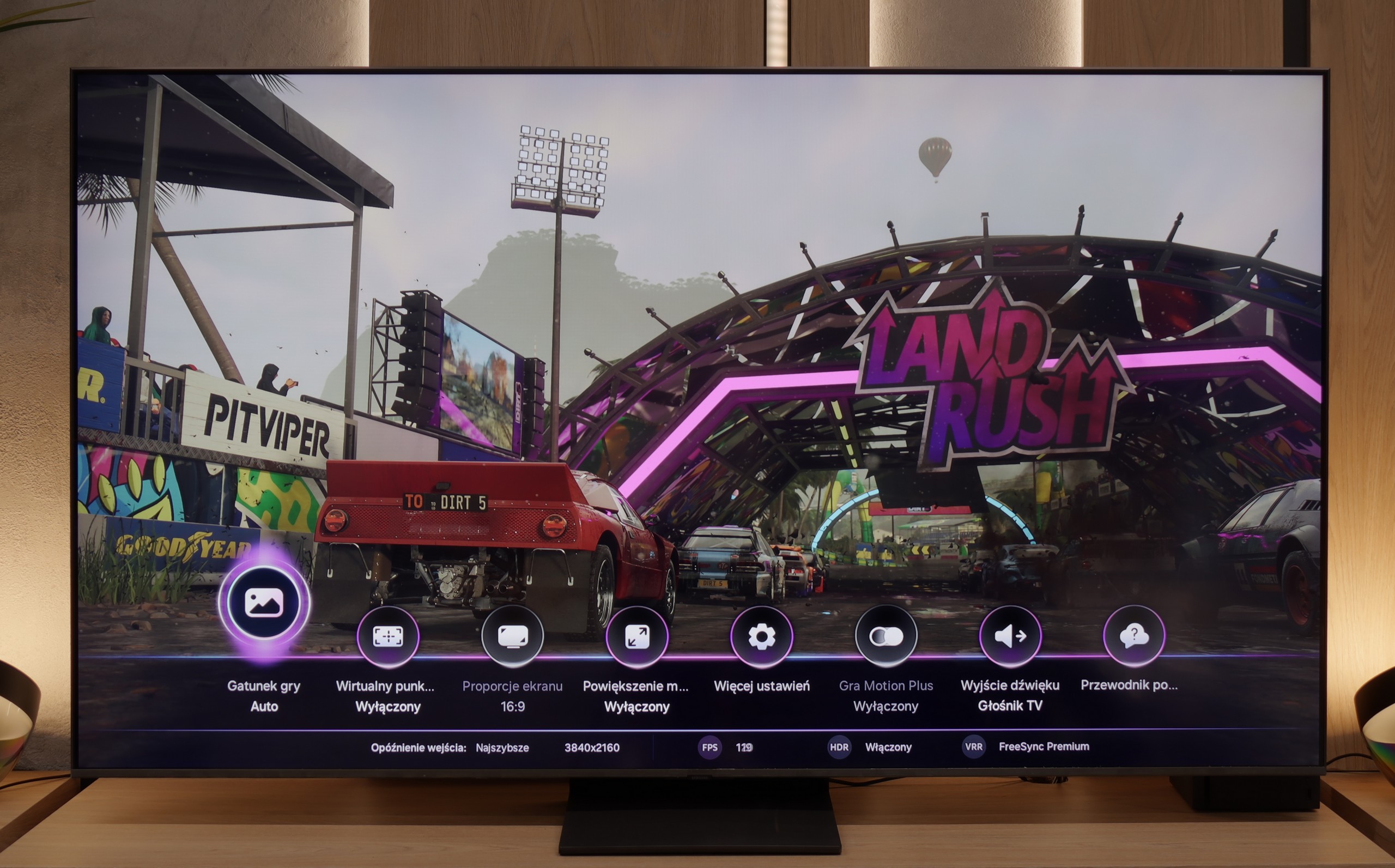

SAMSUNG QN80F - Input lag
9.8/10
QN80F does not disappoint when it comes to response time. The input lag for 120 Hz content drops below 10 ms, which can be considered an almost ideal result – it’s hard to expect more in this class of TVs. Gaming is smooth, responsive, and free from delays that could irritate even the most sensitive players. For 60 Hz materials, the lag is higher, around 19 ms, but this is a completely natural phenomenon and still falls within comfortable limits.
| SDR | HDR | Dolby Vision |
|---|---|---|
| 1080p60: 19 ms | 2160p60: 17 ms | |
| 1080p120: 9 ms | 2160p120: 9 ms | |
| 2160p60: 19 ms | ||
| 2160p120: 9 ms |

SAMSUNG QN80F - Compatibility with PC
8.8/10
Chroma 444 (maximum resolution and refresh rate): Yes
Font clarity: Very Good
Readability of dark text and shapes: Good
Input lag in PC mode (4K, maximum refresh rate): 9ms
Matrix subpixel arrangement: BGR
Max refresh rate: 144Hz
G-Sync: Yes
Playing on the QN80F with a connected computer is pure pleasure. The TV works seamlessly with NVIDIA graphics cards (thanks to G-Sync support) and AMD (thanks to FreeSync Premium), and the 144 Hz refresh rate only enhances comfort during dynamic gameplay. Everything works right away, without unnecessary fiddling with settings – exactly as it should.
When it comes to work, it is also very good. The readability of fonts is high, and the texts appear sharp and clear. With very thin horizontal lines, one can notice slight imperfections, but really – you have to look closely. Unless, like us, you sometimes enjoy examining the screen with a magnifying glass… then you might spot something 😉.
SAMSUNG QN80F - Viewing angles
3.1/10
Brightness drop at an angle of 45 degrees: 81%
QN80F, like most TVs with VA panels, does not impress in terms of viewing angles. It is enough to lean slightly to the side to notice a significant drop in brightness and lost color saturation. The image loses its "depth" and "vividness," and darker scenes may appear slightly washed out. However, this is a typical characteristic of VA panels, which in return offer significantly better native contrast than IPS panels. In short: something for something. If you are sitting directly in front of the screen – there will be no problem. But when watching together in a larger group, it is worth keeping this in mind.
SAMSUNG QN80F - Daytime performance
6.6/10
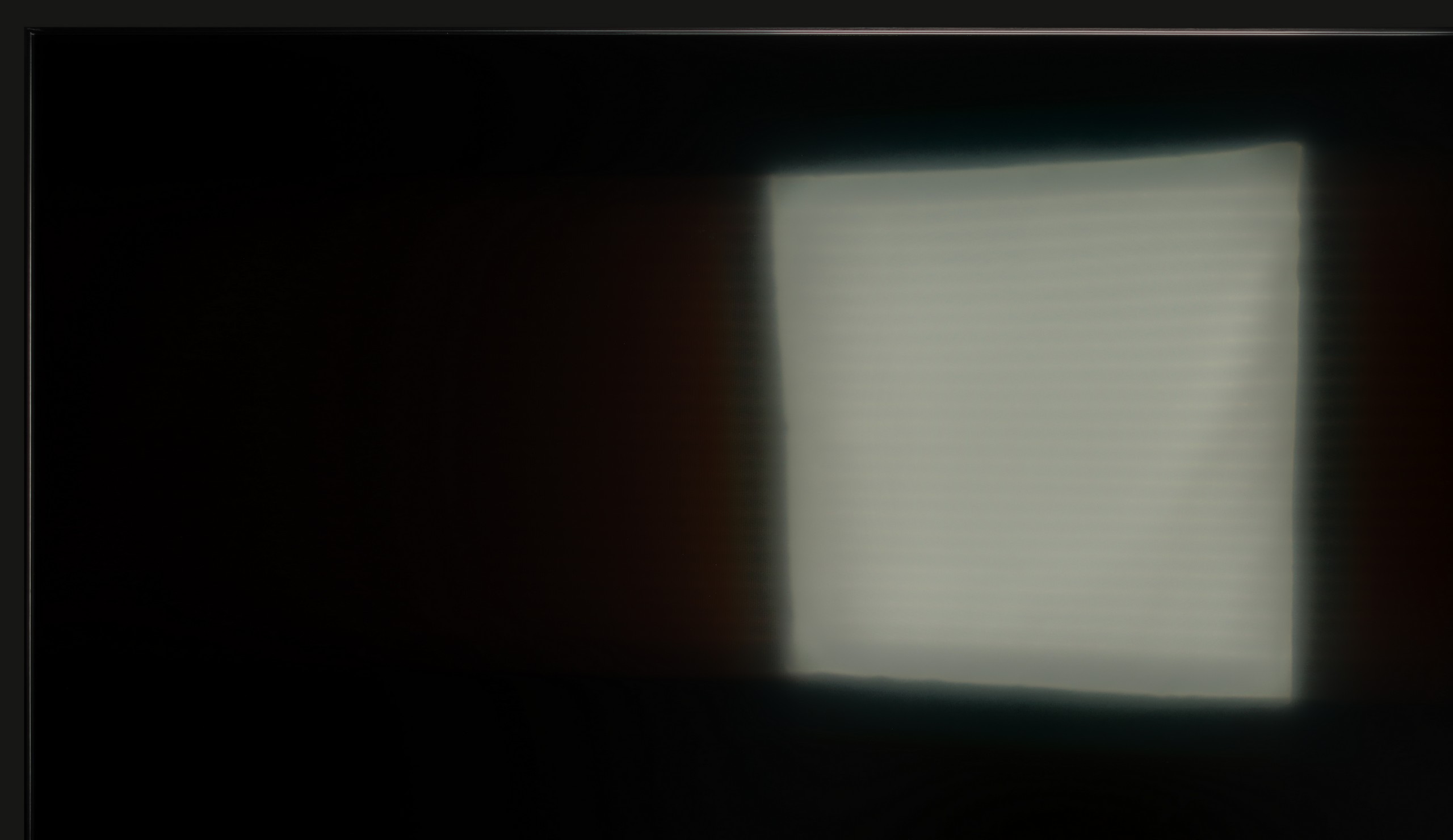

Panel finish: Satin
Reflection suppression: Good
Black levels during daytime: Very Good
QN80F is really a bright TV. The average brightness in SDR materials is around 550 nits, regardless of the scene, which practically means that you can comfortably watch content even in a well-lit room – and you don’t have to close the curtains every time we turn on a movie. The new satin coating of the panel is also a plus, as it handles reflections much better compared to last year's QN80D. Glare is less bothersome, and the screen maintains readability in various lighting conditions. It's hard to find fault with anything here – the QN80F simply performs great during the day.
Panel brightness
Average luminance SDR
SAMSUNG QN80F: 543 cd/m2
SAMSUNG QN80F - TV features
7.7/10
System: Tizen
System performance: Very good
- HDMI inputs: 0 x HDMI 2.0, 4 x HDMI 2.1 48Gbps
- Outputs: Toslink (Optical audio), eARC (HDMI), ARC (HDMI)
- Network Interfaces: Wi-Fi 2.4GHz, Wi-Fi 5GHz, Ethernet (LAN) 100Mbps
- TV reception: DVB-T, DVB-T2, DVB-S, DVB-S2, DVB-C
Classic features:
Recording to USB (terrestrial TV): No
Recording programming: No
Picture in Picture (PiP): Yes
RF remote control (no need to aim at the screen): RF
Backlit remote control: No
Teletext: Yes
Audio only mode: Yes
Bluetooth headphones support: Yes
Simultaneous Bluetooth headphones & TV audio: Yes
Smart features:
AirPlay: Yes
Screen mirroring (Windows Miracast): Yes
Voice search: Yes
Voice search in native language: Yes
Ability to connect a keyboard and mouse: Yes

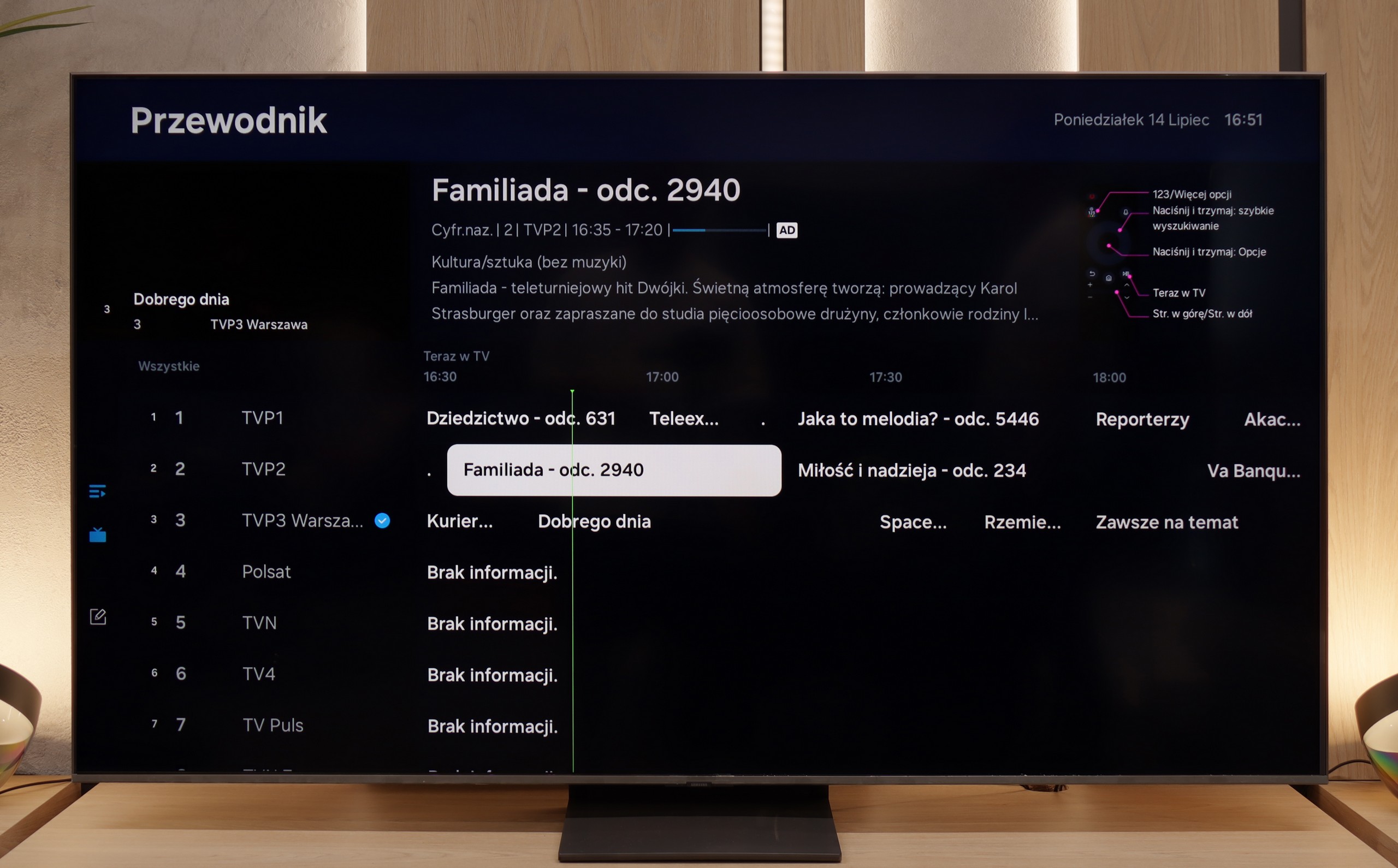






SmartTV QN80F: Tizen
When it comes to smart features, the QN80F has nothing to be ashamed of. On the contrary – Tizen is one of the richest operating systems in terms of functionality. We have voice search, support for AirPlay, Miracast, and all the major streaming platforms at our fingertips. But Samsung's true advantage reveals itself in the smart home – SmartThings. Here, you can not only synchronize light bulbs and vacuum robots but also integrate devices from other manufacturers, thanks to support for the Matter standard. Suddenly, it turns out that the QN80F can serve as a home command center. There is just one "but" – Tizen is a closed system, so we might not find a few lesser-known apps. However, in practice, it still has everything that 99% of users need.
Classic TV features:
When it comes to classic features, it's just as good – well, almost. The QN80F supports picture-in-picture, a rarely seen but still useful PiP feature. We can easily find EPG, the old good teletext (yes, it works!), and the ability to connect external devices via Bluetooth – whether it's headphones or a soundbar. Unfortunately, there is no option to record to USB from the built-in tuners. That's a minor drawback, especially since the competition at a similar price point is increasingly offering this feature. It may not be a must-have function, but since everything else works so well, it's a pity that it missed that final touch.
Sound connection options
HDMI audio:
Other audio outputs:
Toslink: Yes
Wireless audio:
Bluetooth: Yes
Samsung Q-Symphony (Speaker extension): Yes
Supported audio formats (external HDMI eARC audio):
Dolby Digital Plus 7.1: Yes
Dolby True HD 7.1: No
Dolby Atmos in Dolby Digital Plus (JOC): Yes
Dolby Atmos in Dolby True HD: No
DTS:X in DTS-HD MA: No
DTS-HD Master Audio: No
Senior accessibility
Numeric keyboard on TV: No
Font size adjustment: Yes
Audio description: Yes
SAMSUNG QN80F - Apps
8.7/10























SAMSUNG QN80F - Playing files from USB
9/10

| Maximum photo resolution: | Supported photo formats: |
|---|---|
The built-in media player in the QN80F handles most popular video formats – from classic MP4 to somewhat more demanding containers. It's not a powerhouse like VLC, but it's sufficient for home use. The situation is worse when it comes to photos – here, unfortunately, it's rather modest. The support is mainly limited to the JPG format, but hey, at least that's the most important one 👌. During our tests, there was also a minor issue with subtitles. The QN80F could only handle the simple text format .txt – other, more advanced formats (like .srt or .sub) were unfortunately not recognized.
SAMSUNG QN80F - Sound
6.7/10
87dB
Maximum volume
Supported codecs
(TV speakers)
Dolby Digital Plus 7.1
Dolby True HD 7.1
Dolby Atmos in Dolby Digital Plus (JOC)
Dolby Atmos in Dolby True HD
DTS:X in DTS-HD MA
DTS-HD Master Audio
For a TV of this class, the QN80F sounds surprisingly good. It supports Dolby Atmos format, which is worth noting, as this is still not a given in many models in this range. Unlike the thinner QN70F, you can even feel a slight bass here – all thanks to the thicker casing, which simply gives more room for the sound to "breathe." For everyday viewing and series, it's more than enough, and with the right settings, you can even consider listening to music without the need to connect external equipment. However – as is often the case with Samsung, there is unfortunately a lack of support for DTS:X format, so if we are using audio devices that support this format, we will first have to connect them to the receiver and only then to the TV.
Sound Quality Test:
Acoustic Measurements
87dBC (Max)
75dBC
SAMSUNG QN80F - Panel details
Software version during testing: T-PTMFDEUC-0090-1110.8, E2500007, BT-S
Subpixel Structure:

Panel uniformity and thermal imaging:
Backlight Type: Mini-LED QLED

Founder and originator of the "ChooseTV" portal

Journalist, reviewer, and columnist for the "ChooseTV" portal
See articles related to SAMSUNG QN80F:
Shopping Reviews
The best Samsung TVs 2024 / 2025! Which Samsung TV to choose... 4/30/2025
1/15/2025
Our YouTube channel
Smart calibration of Samsung TV in SmartThing? 6/23/2025
2/4/2025




